Home • Programming • SQL
SQL Joins
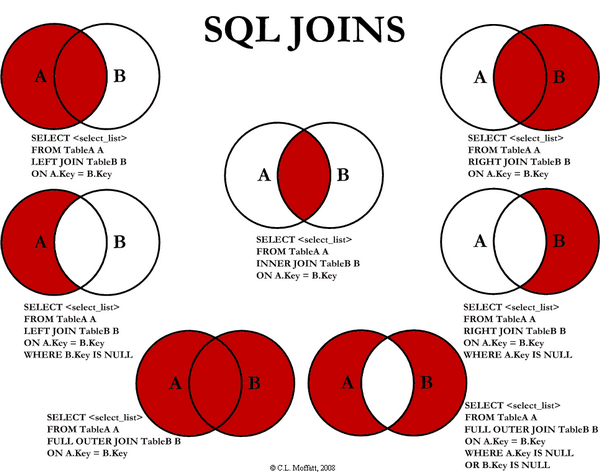 1. INNER JOIN
2. LEFT JOIN
3. RIGHT JOIN
4. OUTER JOIN
5. LEFT JOIN EXCLUDING INNER JOIN
5. RIGHT JOIN EXCLUDING INNER JOIN
7. OUTER JOIN EXCLUDING INNER JOIN
1. INNER JOIN
2. LEFT JOIN
3. RIGHT JOIN
4. OUTER JOIN
5. LEFT JOIN EXCLUDING INNER JOIN
5. RIGHT JOIN EXCLUDING INNER JOIN
7. OUTER JOIN EXCLUDING INNER JOIN
Inner JOIN
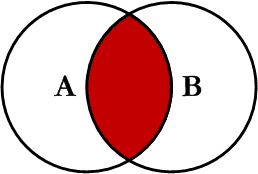 This is the simplest, most understood Join and is the most common. This query will return all of the records in the left table (table A) that have a matching record in the right table (table B). This Join is written as follows:
This is the simplest, most understood Join and is the most common. This query will return all of the records in the left table (table A) that have a matching record in the right table (table B). This Join is written as follows:
SELECT <select_list> FROM Table_A A INNER JOIN Table_B B ON A.Key = B.Key
Left JOIN
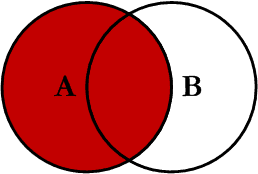 This query will return all of the records in the left table (table A) regardless if any of those records have a match in the right table (table B). It will also return any matching records from the right table. This Join is written as follows:
This query will return all of the records in the left table (table A) regardless if any of those records have a match in the right table (table B). It will also return any matching records from the right table. This Join is written as follows:
SELECT <select_list> FROM Table_A A LEFT JOIN Table_B B ON A.Key = B.Key
Right JOIN
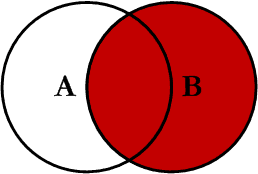 This query will return all of the records in the right table (table B) regardless if any of those records have a match in the left table (table A). It will also return any matching records from the left table. This Join is written as follows:
This query will return all of the records in the right table (table B) regardless if any of those records have a match in the left table (table A). It will also return any matching records from the left table. This Join is written as follows:
SELECT <select_list> FROM Table_A A RIGHT JOIN Table_B B ON A.Key = B.Key
Full Outer JOIN
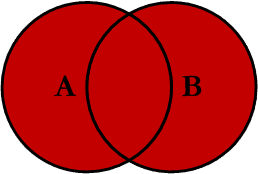 This Join can also be referred to as a FULL OUTER JOIN or a FULL JOIN. This query will return all of the records from both tables, joining records from the left table (table A) that match records from the right table (table B). This Join is written as follows:
This Join can also be referred to as a FULL OUTER JOIN or a FULL JOIN. This query will return all of the records from both tables, joining records from the left table (table A) that match records from the right table (table B). This Join is written as follows:
SELECT <select_list> FROM Table_A A FULL OUTER JOIN Table_B B ON A.Key = B.Key
Left Excluding JOIN
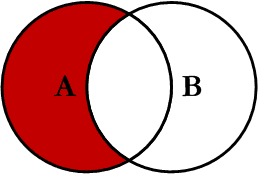 This query will return all of the records in the left table (table A) that do not match any records in the right table (table B). This Join is written as follows:
This query will return all of the records in the left table (table A) that do not match any records in the right table (table B). This Join is written as follows:
SELECT <select_list> FROM Table_A A LEFT JOIN Table_B B ON A.Key = B.Key WHERE B.Key IS NULL
Right Excluding JOIN
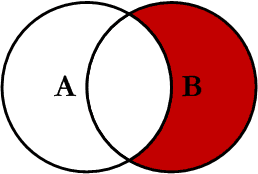 This query will return all of the records in the right table (table B) that do not match any records in the left table (table A). This Join is written as follows:
This query will return all of the records in the right table (table B) that do not match any records in the left table (table A). This Join is written as follows:
SELECT <select_list> FROM Table_A A RIGHT JOIN Table_B B ON A.Key = B.Key WHERE A.Key IS NULL
Outer Excluding JOIN
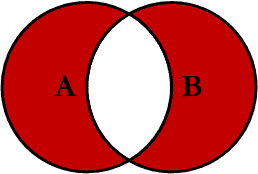 This query will return all of the records in the left table (table A) and all of the records in the right table (table B) that do not match. I have yet to have a need for using this type of Join, but all of the others, I use quite frequently. This Join is written as follows:
This query will return all of the records in the left table (table A) and all of the records in the right table (table B) that do not match. I have yet to have a need for using this type of Join, but all of the others, I use quite frequently. This Join is written as follows:
SELECT <select_list> FROM Table_A A FULL OUTER JOIN Table_B B ON A.Key = B.Key WHERE A.Key IS NULL OR B.Key IS NULL
Examples
Suppose we have two tables, Table_A and Table_B. The data in these tables are shown below: TABLE_A PK Value ---- ---------- 1 FOX 2 COP 3 TAXI 6 WASHINGTON 7 DELL 5 ARIZONA 4 LINCOLN 10 LUCENT TABLE_B PK Value ---- ---------- 1 TROT 2 CAR 3 CAB 6 MONUMENT 7 PC 8 MICROSOFT 9 APPLE 11 SCOTCH The results of the seven Joins are shown below: -- INNER JOIN SELECT A.PK AS A_PK, A.Value AS A_Value, B.Value AS B_Value, B.PK AS B_PK FROM Table_A A INNER JOIN Table_B B ON A.PK = B.PK A_PK A_Value B_Value B_PK ---- ---------- ---------- ---- 1 FOX TROT 1 2 COP CAR 2 3 TAXI CAB 3 6 WASHINGTON MONUMENT 6 7 DELL PC 7 (5 row(s) affected) -- LEFT JOIN SELECT A.PK AS A_PK, A.Value AS A_Value, B.Value AS B_Value, B.PK AS B_PK FROM Table_A A LEFT JOIN Table_B B ON A.PK = B.PK A_PK A_Value B_Value B_PK ---- ---------- ---------- ---- 1 FOX TROT 1 2 COP CAR 2 3 TAXI CAB 3 4 LINCOLN NULL NULL 5 ARIZONA NULL NULL 6 WASHINGTON MONUMENT 6 7 DELL PC 7 10 LUCENT NULL NULL (8 row(s) affected) -- RIGHT JOIN SELECT A.PK AS A_PK, A.Value AS A_Value, B.Value AS B_Value, B.PK AS B_PK FROM Table_A A RIGHT JOIN Table_B B ON A.PK = B.PK A_PK A_Value B_Value B_PK ---- ---------- ---------- ---- 1 FOX TROT 1 2 COP CAR 2 3 TAXI CAB 3 6 WASHINGTON MONUMENT 6 7 DELL PC 7 NULL NULL MICROSOFT 8 NULL NULL APPLE 9 NULL NULL SCOTCH 11 (8 row(s) affected) -- OUTER JOIN SELECT A.PK AS A_PK, A.Value AS A_Value, B.Value AS B_Value, B.PK AS B_PK FROM Table_A A FULL OUTER JOIN Table_B B ON A.PK = B.PK A_PK A_Value B_Value B_PK ---- ---------- ---------- ---- 1 FOX TROT 1 2 COP CAR 2 3 TAXI CAB 3 6 WASHINGTON MONUMENT 6 7 DELL PC 7 NULL NULL MICROSOFT 8 NULL NULL APPLE 9 NULL NULL SCOTCH 11 5 ARIZONA NULL NULL 4 LINCOLN NULL NULL 10 LUCENT NULL NULL (11 row(s) affected) -- LEFT EXCLUDING JOIN SELECT A.PK AS A_PK, A.Value AS A_Value, B.Value AS B_Value, B.PK AS B_PK FROM Table_A A LEFT JOIN Table_B B ON A.PK = B.PK WHERE B.PK IS NULL A_PK A_Value B_Value B_PK ---- ---------- ---------- ---- 4 LINCOLN NULL NULL 5 ARIZONA NULL NULL 10 LUCENT NULL NULL (3 row(s) affected) -- RIGHT EXCLUDING JOIN SELECT A.PK AS A_PK, A.Value AS A_Value, B.Value AS B_Value, B.PK AS B_PK FROM Table_A A RIGHT JOIN Table_B B ON A.PK = B.PK WHERE A.PK IS NULL A_PK A_Value B_Value B_PK ---- ---------- ---------- ---- NULL NULL MICROSOFT 8 NULL NULL APPLE 9 NULL NULL SCOTCH 11 (3 row(s) affected) -- OUTER EXCLUDING JOIN SELECT A.PK AS A_PK, A.Value AS A_Value, B.Value AS B_Value, B.PK AS B_PK FROM Table_A A FULL OUTER JOIN Table_B B ON A.PK = B.PK WHERE A.PK IS NULL OR B.PK IS NULL A_PK A_Value B_Value B_PK ---- ---------- ---------- ---- NULL NULL MICROSOFT 8 NULL NULL APPLE 9 NULL NULL SCOTCH 11 5 ARIZONA NULL NULL 4 LINCOLN NULL NULL 10 LUCENT NULL NULL (6 row(s) affected) Note on the OUTER JOIN that the inner joined records are returned first, followed by the right joined records, and then finally the left joined records (at least, that's how my Microsoft SQL Server did it; this, of course, is without using any ORDER BY statement).- University
- Online Tips
- Engineering
- Programming
- General Subjects
- Science
- News
- Jobs
- Commerce
- General Knowledge
- Story, Tales & Poem
- Software Application
- Framework
- Operating System
- Database
- Networking
- Quiz
- Generic ERP



Comments 1